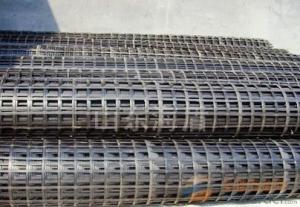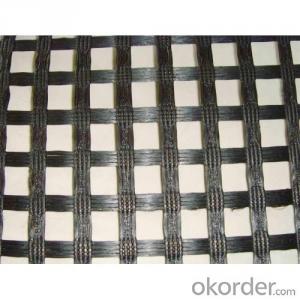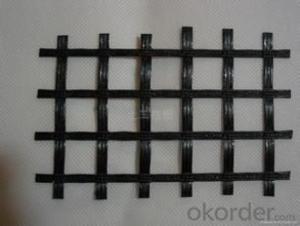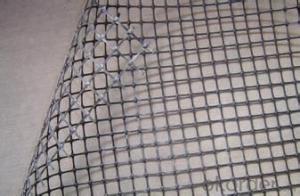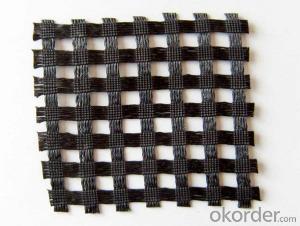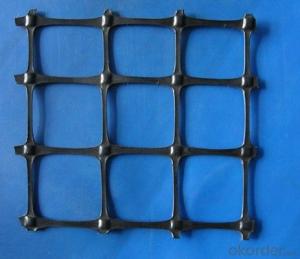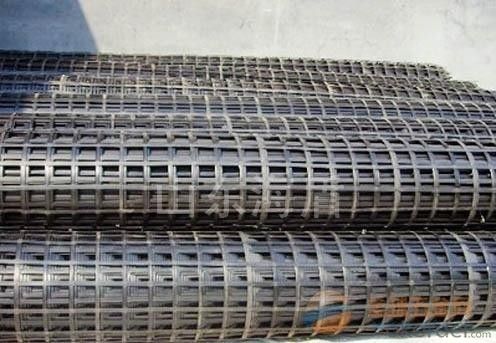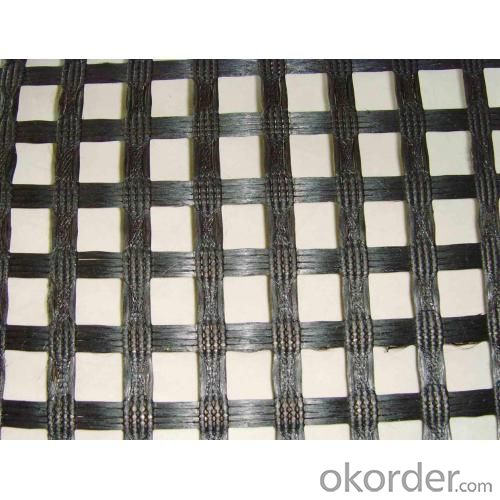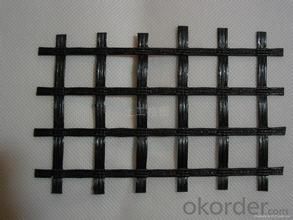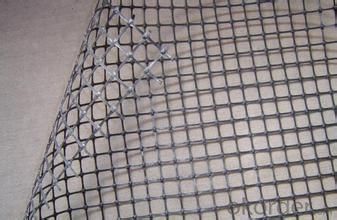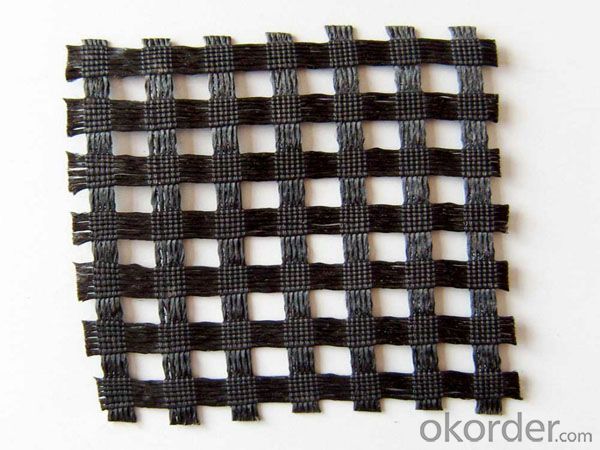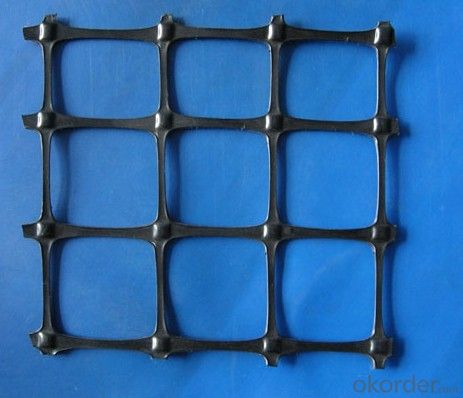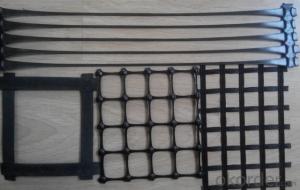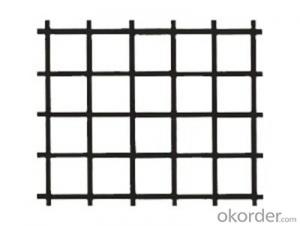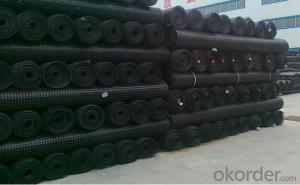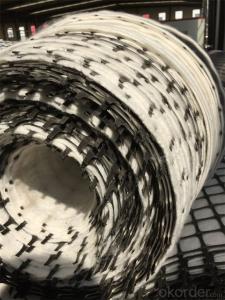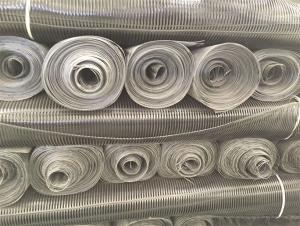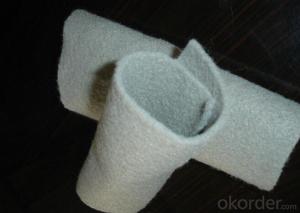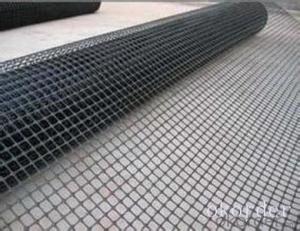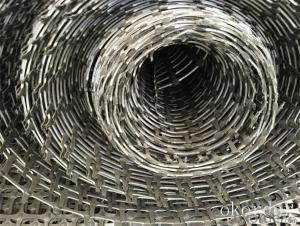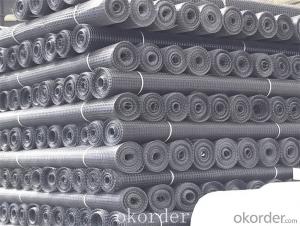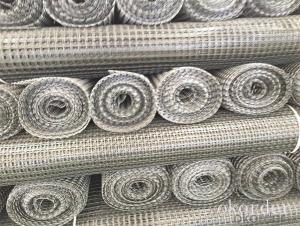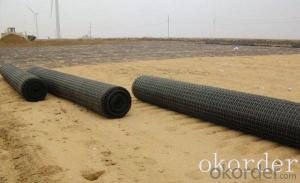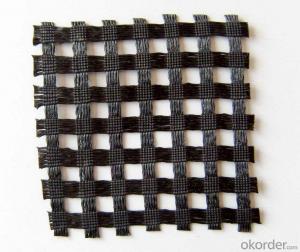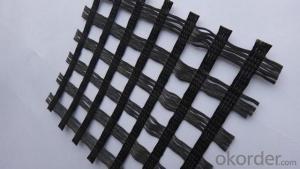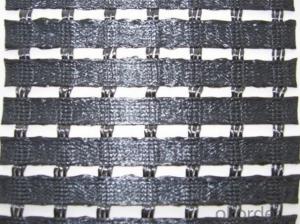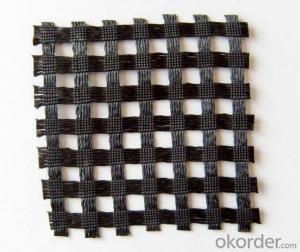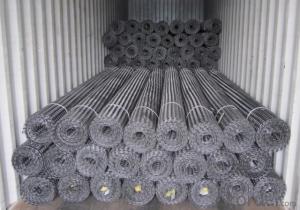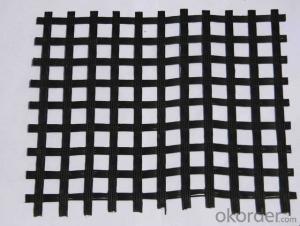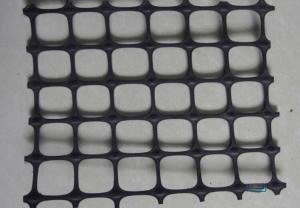Biaxial Extruded Geogrids - Biaxial Tensile Plastic Geogrid for Sale Made in China
- Loading Port:
- Qingdao
- Payment Terms:
- TT OR LC
- Min Order Qty:
- 30000 m²
- Supply Capability:
- 500000 m²/month
OKorder Service Pledge
OKorder Financial Service
You Might Also Like
Structure of Biaxial Tensile Plastic Geogrid:
Biaxial Tensile Plastic Geogrid is a kind of new favorable earthwork base material to strengthen the road surface and roadbed.This product is made by weaving and covering fiberglass filament. It is featured by high vertical and horizontal tensile strength, low unit extension, high flexibility, and favorable high and low temperature resistance. Widely used in the reinfircement of asphalt pavement, cement pavement and roadbed, as well as railroad bed,embankment revement, airport runway, and the prevention and control of desertification.
Main Features of Biaxial Tensile Plastic Geogrid:
fiberglass geogrid for soil reinforcement
Reinforcement of the surface of road and bridge.
High tensile strength, low elongation
Dyke reinforcement on soft ground for stress evenness,sedimentation adjustment,increase of stability and loading capacity of fundus;
Biaxial Tensile Plastic Geogrid Images
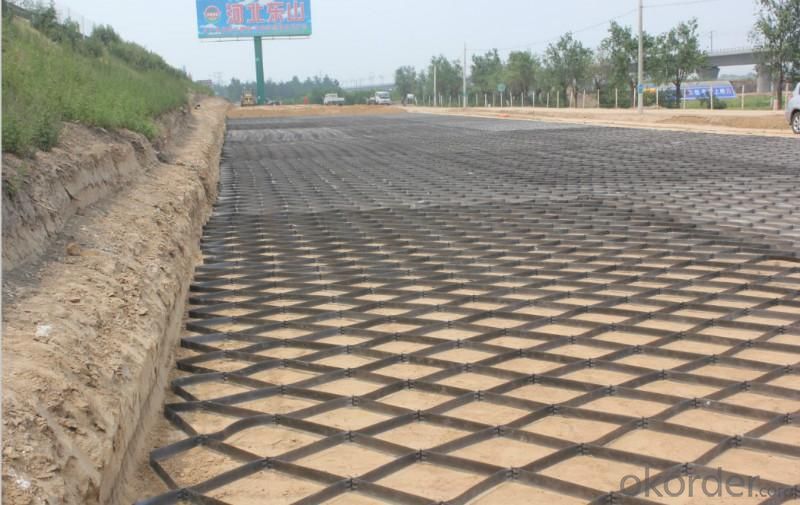
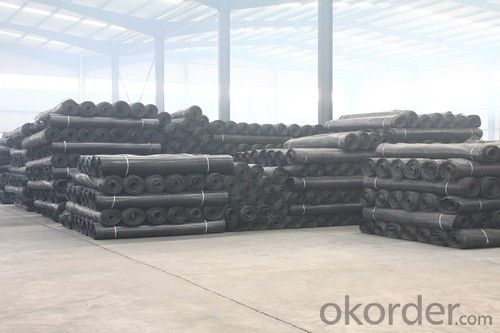
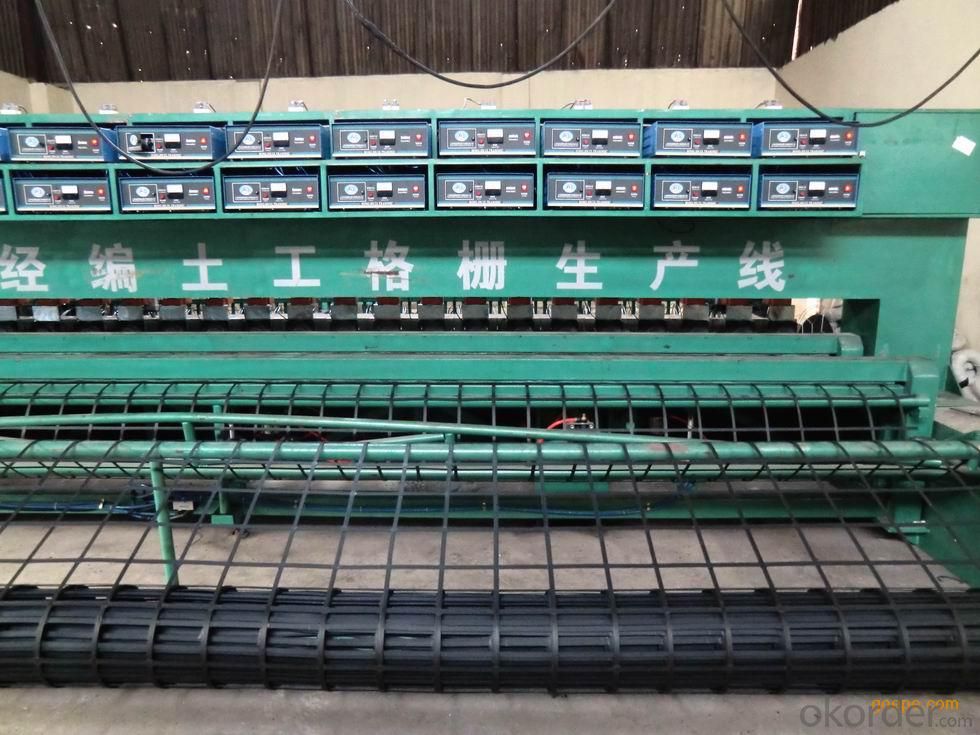
Biaxial Tensile Plastic Geogrid Specification
Polyester Geogrid GGF80 Technical Specification | |||
Property | Test Method | Unit | Index |
Wide Width Tensile Strength | |||
MD | KN/M | ≥80 | |
CMD | KN/M | ≥80 | |
Elongation At Break | ≤4 | ||
Grid | MM | 25.4×25.4 | |
Width | M | 1~6 | |
Packaging | Details | ||
Roll Dimensions(W×L) | According to customer requirements | ||
Square Meters Per Roll | |||
Estimated Roll Weight | |||
It is widely used in Asphalt wall, railway foundation, dike slope, runway and sand harnessing.
FAQ
We have organized several common questions for our clients,may help you sincerely:
Q: How about your company?
A:Our company are one of the largest geosynthetic products supplier in the world.We have the products experience more than 20 years.Already export to USA/Germeny/Australia/Zambia/Brazil etc.more than 20 countries.Almost 10years.Our products including Geocell/Fiberglass Geogrid/Geomembrane/Geotextile/Geonet etc.
Q.Does your products have good qualitity?
A:Yes,we have do many big projects such as the 2008 Beijing Olympic BIRD NEST. Divert water from the south to the north project. And our products have CE certificate also.
Q:How long can we receive the products after purchase?
A:In the purchase of product within three working days, We will arrange the factory delivery as soon as possible. The pecific time of receiving is related to the state and position of customers.Commonly 15-20 working days can be delivery.
- Q: Can geogrids be used in reinforcement of slopes and embankments?
- Yes, geogrids can be used in the reinforcement of slopes and embankments. Geogrids are commonly used in civil engineering projects to provide additional stability and strength to soil structures. They are placed within the soil layers to distribute loads and prevent soil movement, reducing the risk of slope failure or embankment collapse. Geogrids also help in soil stabilization and erosion control, making them an effective solution for slope and embankment reinforcement.
- Q: What is the recommended depth of geogrid installation?
- The recommended depth of geogrid installation varies depending on the specific project requirements and soil conditions. However, in general, it is recommended to install geogrids at a depth of around 1 to 2 feet below the ground surface. This depth allows for proper interaction between the geogrid and the surrounding soil, maximizing its effectiveness in providing reinforcement and stability.
- Q: What are the procedures for using two-way geogrid
- 4 bidirectional geogrid used to prevent cracks in culvert.5 bidirectional geogrid is used to enhance soil slope and prevent soil erosion.6 bidirectional geogrid used to reduce the thickness of cushion, saving cost.7 bidirectional geogrid for stability of slope greening environment support grass mat.
- Q: Can geogrids be used in slope stabilization for railway embankments?
- Yes, geogrids can be used in slope stabilization for railway embankments. Geogrids are commonly used in civil engineering projects to provide reinforcement and stability to soil and slopes. Their high tensile strength and ability to distribute loads make them effective in preventing slope failure and erosion. In the case of railway embankments, geogrids can be installed to improve the stability of the slopes, reduce the risk of landslides, and ensure the long-term functionality and safety of the railway infrastructure.
- Q: What are the advantages of using geogrids in ground improvement for liquefaction mitigation?
- Geogrids offer several advantages when used in ground improvement for liquefaction mitigation. Firstly, geogrids provide increased shear strength to the soil, which helps to prevent liquefaction during seismic events. They enhance the stability and load-bearing capacity of the ground by effectively distributing loads and reducing settlements. Additionally, geogrids improve the overall performance of the soil by increasing its stiffness and reducing its compressibility. This ultimately leads to a more stable and resilient ground, reducing the risk of liquefaction-induced damage. Furthermore, geogrids are lightweight, easy to install, and cost-effective, making them a practical choice for ground improvement projects.
- Q: Can geogrids be used in reinforcement of bridge abutments and wing walls?
- Yes, geogrids can be used in the reinforcement of bridge abutments and wing walls. Geogrids are commonly used in civil engineering projects to provide stability and increase the load-bearing capacity of soil. By placing geogrids in the backfill soil behind bridge abutments and wing walls, they can help distribute the loads and prevent soil erosion. This reinforcement technique improves the overall structural integrity of the bridge and enhances its long-term performance.
- Q: Are geogrids effective in stabilizing riverbanks?
- Yes, geogrids are effective in stabilizing riverbanks. Geogrids provide reinforcement and prevent soil erosion, helping to maintain the stability and integrity of riverbanks. They can withstand high water flow and offer long-term durability, making them an efficient solution for stabilizing riverbanks.
- Q: Do geogrids provide reinforcement to geosynthetic asphalt liners?
- Yes, geogrids can provide reinforcement to geosynthetic asphalt liners. Geogrids are typically used to enhance the stability, strength, and performance of geosynthetic materials, including asphalt liners. They help distribute loads and reduce stress, improving the overall durability and longevity of the liner system.
- Q: Can geogrids be used in coastal protection structures?
- Yes, geogrids can be used in coastal protection structures. Geogrids are often employed in coastal engineering projects to reinforce soil and prevent erosion. They provide stability and strength to various coastal structures such as seawalls, revetments, and breakwaters, helping to mitigate the impact of waves, tides, and currents.
- Q: How do geogrids prevent differential settlement?
- Geogrids prevent differential settlement by distributing the load and enhancing the stability of soil by providing reinforcement. They improve the overall strength and stiffness of the soil, reducing the likelihood of differential settlement occurring.
Send your message to us
Biaxial Extruded Geogrids - Biaxial Tensile Plastic Geogrid for Sale Made in China
- Loading Port:
- Qingdao
- Payment Terms:
- TT OR LC
- Min Order Qty:
- 30000 m²
- Supply Capability:
- 500000 m²/month
OKorder Service Pledge
OKorder Financial Service
Similar products
Hot products
Hot Searches
Related keywords
